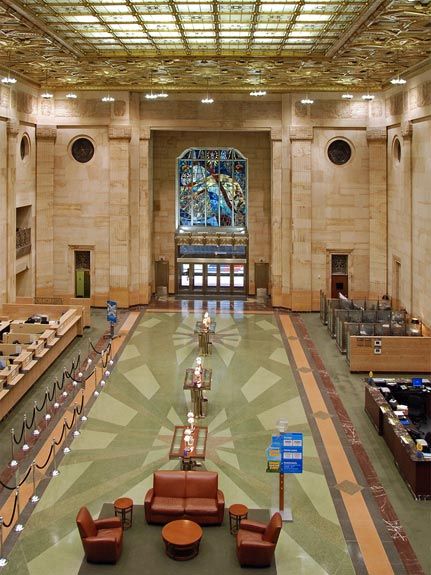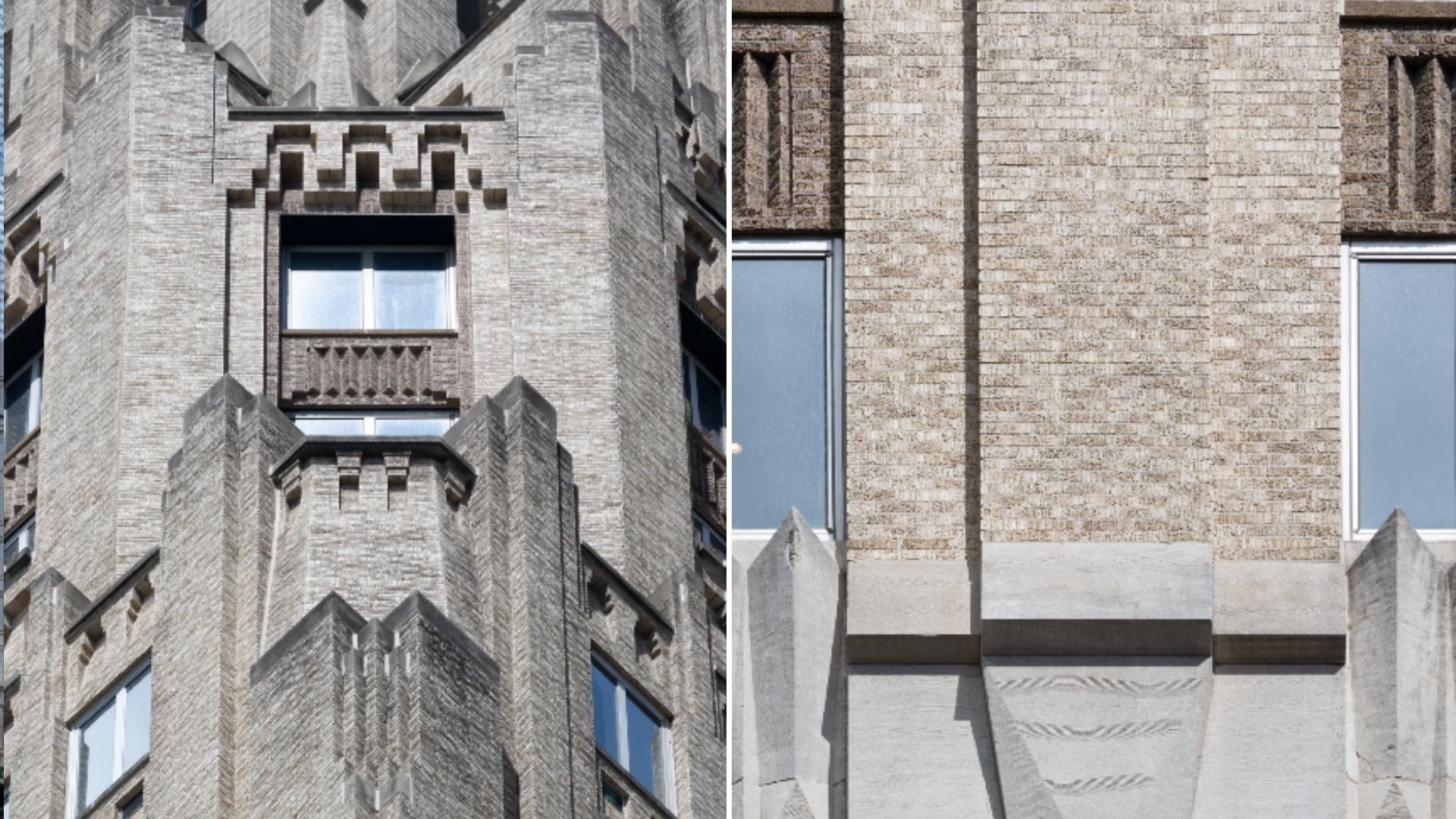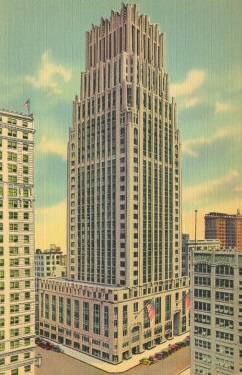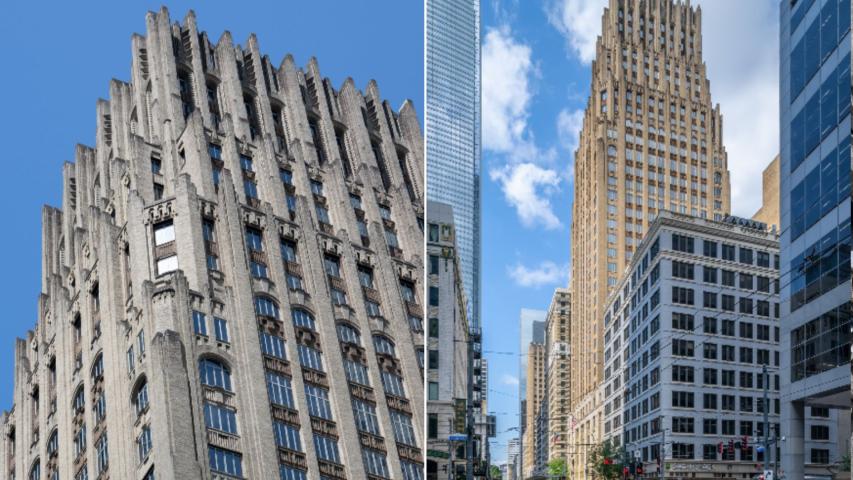One of the most magnificent examples of commercial buildings designed in the “Art Deco” style was constructed of brick manufactured by Acme Brick. The Gulf Building is still a “show stopper” almost 100 years after it was built.
The rich history of Acme Brick has been built on both historically significant structures—office buildings, educational facilities, and sports venues—and the homes of regular families. Each group is important in its own way, and each has allowed Acme Brick to stand the test of time.
Art Deco Design
The popularity of significant styles of architecture, interior design, furnishings, and building materials has always been cyclical. When it was originally introduced in the mid-1920s, Art Deco was nothing short of dazzling in its style, and it makes a ”return visit" on a regular basis.
According to this source, it was “a glamorization of the architecture and interiors made possible by modern technology. The style reveled in all things new, exotic, glamorous, and dramatic and was wildly popular until the late 1930s and early 1940s, when its over-the-top ostentation fell out of step with the Depression and World War II.
“Its bold, exuberant colors, decadent high-end finishes, and exotic motifs have surged back in the popular imagination over the years, and Art Deco’s celebration of strong geometry, look-at-me-patterns, and rich materials is hugely influential with contemporary designers.

The Gulf Building is Timeless
In Houston, those designers need only to go to Main and Rusk Streets downtown for inspiration. The Texas State Historical Association notes, ”The Gulf Building is one of the preeminent Art Deco skyscrapers in the southwest United States. Architects Alfred C. Finn, Kenneth Franzheim, and J.E.R. Carpenter were commissioned in 1927 by Jesse H. Jones, a business titan and owner of the ‘Houston Chronicle,’ to design a structure of strikingly modern style and commanding height. From its completion in 1929 until 1931, it was the tallest building west of the Mississippi, and from 1929 until 1963, it dominated the skyline of Houston as its tallest building.

“The building located in the downtown financial and petroleum business district is of steel frame construction, clad in Indiana limestone, supported by a six-story base, and T-shaped in plan; it carries a thirty-story tower faced with tapestry brick laid in Flemish bond. The architects utilized Eliel Saarinen's stepped profile design, which diminishes in volume as it rises. The construction cost of the building has been estimated at $3.5 million. Two annexes were subsequently added in 1946 and 1949, both designed by Alfred C. Finn. Between 1981 and 1986, the Gulf Building was renovated and restored by the Houston architectural firm Sikes, Jennings, Kelly for its owner, Texas Commerce Bank.

“The observation deck atop the tower housed an aeronautical beacon and a telescope. It is said that on a clear day, Galveston (approximately fifty-five miles) was clearly visible through the telescope. The Main Street lobby is richly decorated with eight frescoes illustrating the history of Texas and Houston, painted by New York artist Vincent Maragliotti, with vaulted ceilings, and with fixtures of decorative polished nickel and etched glass in panels of raised arches, scrolls, rays, and chevrons. A massive stained-glass window depicting the Battle of San Jacinto was installed in 1960.
“From 1966 to 1974, the company insignia of the Gulf Oil Corporation, an orange 53-foot-high rotating neon disc, was affixed to the rooftop where the beacon and telescope had been. Known locally as the ‘Gulf Lollipop,’ it was loved by some and considered gauche by others but was a landmark to all.”
In its current configuration, the building has a total of 800,000 square feet of space. On the ground floor, the building has a 15,000-square-foot retail banking center. The banking center has 43-foot ceilings, floors and walls made of marble, and large stained-glass windows. On August 30, 2010, the 27th floor of the building caught fire. The fire quickly escalated from one to two to three alarms within 30 minutes as firefighters tried to battle the blaze with low water pressure.
Still a Contemporary After Almost 100 Year
While the Art Deco style is the same as it was in the 1920s, the building has a remarkably contemporary look and feel. Acme Brick is proud to have been a part of this amazing history!
Click here for a free, pocket-size guide to brick construction.

